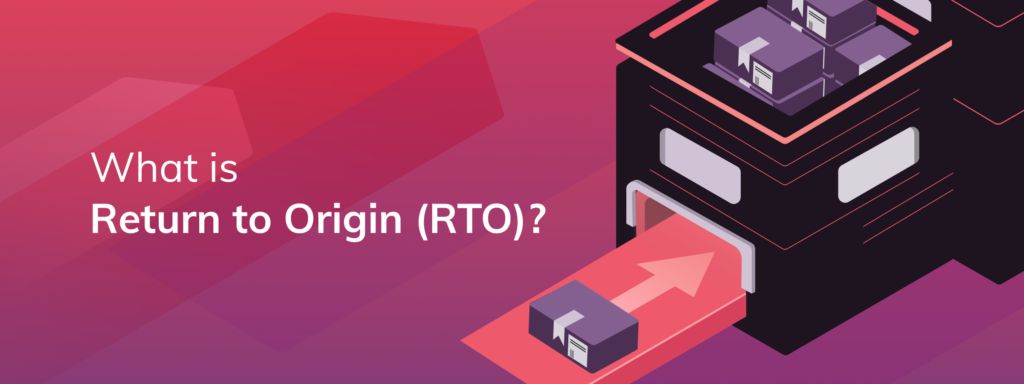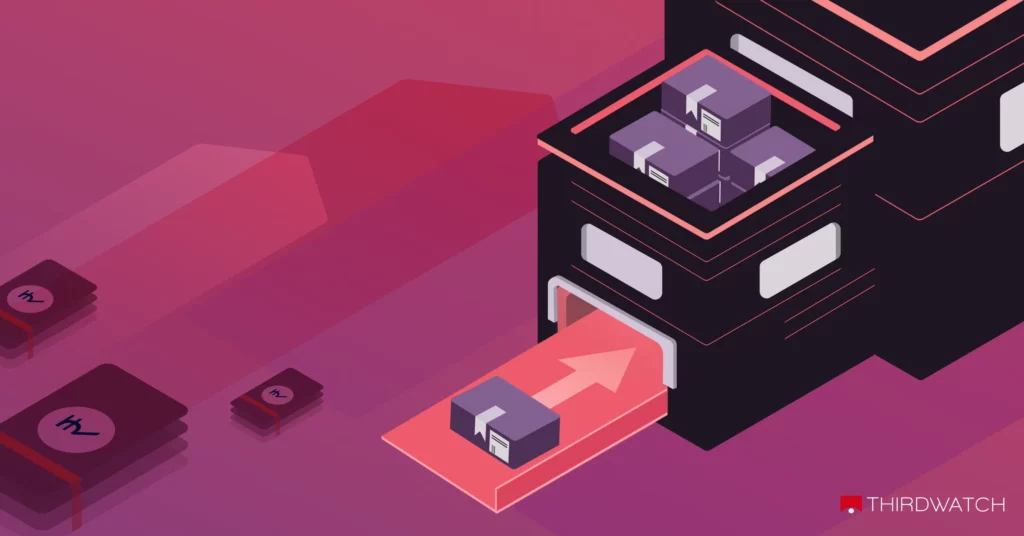Reducing RTO in e-commerce is a critical issue for businesses with an online presence.
As e-commerce is beginning to make large strides across all parts of the country, sellers are receiving a high influx of orders. But as sellers are faced with a mountain of opportunities and orders every day, they are also plagued by a common problem – Return to Origin or RTO orders.
RTO can arise due to various reasons, such as an incorrect address, customer unavailability or refusal of delivery. Effective strategies can be implemented to reduce RTO and minimise its impact on e-commerce operations. In this article, we will be looking at what the meaning of RTO in e-commerce is, why it occurs, and what are the best practices to reduce RTO losses for your e-commerce store.
Table of Contents
What is Return to Origin?
Return to Origin is defined as the process in which an order never reaches the customer and is sent back to the warehouse citing a variety of reasons. RTO orders can become more significant as sellers receive more orders and expand to Tier 2 and Tier 3 cities.

Studies show that 1 in 3 orders are RTO orders. This can result in a significant increase in handling costs to process these orders. Let’s look at how e-commerce businesses can lose money:
- Forward and reverse logistics costs
- Blocked Inventory (Items stuck in transit)
- Physical quality check and re-packaging of returned items
- Increased probability of damage to fragile items, and hence more money spent in shipping them
- Cash handling charges for CoD orders
- Operations and resources cost in order processing
It is also worth noting that most RTO orders for e-commerce stores arise out of fraudulent instances and Cash on Delivery orders.
Related Read: What Is the Difference Between Inbound and Outbound Logistics?
The impact of e-commerce fraud
Fraud in e-commerce has substantially increased globally over the last few years with the immense rise in online marketplaces. With more sophisticated technology available to fraudsters, it’s only become more difficult for e-commerce businesses to keep a track of the tactics used to defraud online businesses.
Here are some common types of fraud performed in the e-commerce industry:
- Chargeback fraud
- Identity theft
- Return fraud
- Credit card fraud
- Merchant fraud
- Phishing
- Clean fraud
The real impact of e-commerce fraud is the cost incurred to the business. Every failed or retracted order causes a chargeback to the e-commerce business. A chargeback is a sum that must be returned by the merchant to the cardholder after a fraudulent transaction.
However, successfully executing a chargeback can be expensive. Processing a chargeback includes operational costs such as transaction fees, legal fees, currency conversions, etc. This can mean potentially large losses for the merchant when an elaborate fraud is in question.
Also read: Chargeback Fraud Setting Back E-commerce Businesses: Is There a Way Out?
Another type of loss is the fact that the seller will not be able to resell the same product after it is canceled and he will have to bear the losses. These types of losses are classified under Return-To-Origin or RTO.
Also read: A short guide to e-commerce fraud
Why are RTOs the biggest challenges for e-commerce brands?
Return to Origin poses significant challenges for e-commerce brands, impacting their operational efficiency and financial stability. The difficulties associated with managing RTOs, especially for cash-on-delivery (COD) orders, can hinder growth and profitability. Here are the key return to origin challenges:
- Increased costs: RTOs result in additional logistics, packaging and inventory management expenses.
- Revenue loss: Failed deliveries lead to lost sales opportunities and revenue erosion.
- Cash flow implications: COD orders increase non-payment risk and tie up working capital.
- Operational inefficiency: RTOs require time-consuming processes like order cancellation, return handling, and reprocessing.
- Customer dissatisfaction: Frequent returns negatively impact customer experience and loyalty.
Why should e-commerce brands reduce RTO?
Reducing RTO is crucial for e-commerce brands due to various reasons.
-
RTO orders often arise from fraudulent activities and COD orders. These instances can lead to significant inventory and profit losses. Safeguarding your business from such losses is essential in maintaining financial stability and growth.
-
A higher RTO rate reflects inefficiencies in the e-commerce fulfilment process. Late deliveries, faulty products or product description inaccuracies can contribute to increased returns. It is crucial to optimise the shipping experience and ensure timely and accurate deliveries. Quick shipping minimises uncertainty for customers and reduces the possibility of returned orders.
By minimising RTOs, you can enhance customer satisfaction, reduce costs associated with returns, and improve overall efficiency within your e-commerce brand.
How to reduce RTO in e-commerce
One of the questions that has been plaguing e-commerce for many years is “How to reduce returns in e-commerce?” or simply, “How to stop RTO?”
The answer to this question can be simpler than you think, albeit you follow the right ways to mitigate these returns. Let’s look at some effective ways to minimise returns on your website:
- Optimize product descriptions: A concise product description can go a long way in helping you set the right expectations with your customers. It’s safe to say that an effective product copy can cut down your return worries by at least 50%!
- Tracking: Tracking plays an important part in customer satisfaction and can significantly bring down customer anxiety whilst ordering from an unknown website. Providing your customers with timely updates can reduce the chances of returns and cancellations.
- Checkout process: Payments are a crucial part of how a customer perceives your online store. A safe payment experience is the dealbreaker when it comes to online shopping for Indians. With a trusted payment partner like Razorpay, your e-commerce business can process payments smoothly and guarantee a hassle-free checkout experience, thus reducing returns.
- Packaging: One of the best ways to keep things lively is to send over a great package, both aesthetically and functionally. If you’re getting a lot of returns due to damaged products or unsatisfied customers, it may be a good time to review your delivery packaging.
Ensure tamper-proof packaging, especially if you are dealing with fragile and perishable items. This can help you in bringing down returns due to faulty packaging. - Customer service: Indian shoppers seem to have finally broken out of the shell where they fear purchasing from an unknown brand / seller. One of the major contributing factors for this is simply the extent to which successful e-commerce companies have bridged the gap with customer service. Customer service, just like tracking, is crucial in eliminating second thoughts and doubts about how good your online store is. Establish an airtight feedback system to deal with customer grievances. You will witness e-commerce returns and RTO drop significantly.
- Improve product page: You can enhance your product page by including multiple high-resolution images, detailed descriptions, and dynamic sizing charts. This helps customers form clear expectations, leading to more informed purchase decisions. Accuracy in order fulfilment is crucial to reducing returns and RTO instances.
You should integrate genuine customer reviews on the product page to convey product quality and usage. Offering diverse customer support options like chatbots, email and contact numbers can help customers resolve queries and concerns effectively. - Offer various payment options: It is crucial to provide customers with multiple payment avenues, such as debit cards, credit cards, UPI and digital wallets. Although COD is also a viable payment option, it can often lead to higher RTO rates due to the risk of non-payment or returns. Encouraging customers to opt for digital payment methods can significantly mitigate the impact of RTO. Additionally, offering discounts or rewards for choosing digital payments can incentivise customers to embrace cashless transactions.
- Prevent return frauds: Safeguarding against fraudulent activities is essential to protect your business and maintain customer trust. Investing in fraud-protection software can help detect suspicious behaviour and trigger alerts, allowing you to take immediate action.
Conducting a quality check upon delivery ensures that the product meets the customer’s expectations and minimises the chances of fraudulent returns. Implementing one-time passwords (OTPs) for high-value orders adds an extra layer of security by verifying the authenticity of the customer.
You must ensure identifying and blacklisting fraudulent customers to reduce the instances of fraudulent returns in the future. This approach not only reduces RTO but also protects your brand reputation and improves overall efficiency and bottom line.
How can I reduce my cash-on-delivery losses?
Until a few years ago, the e-commerce industry was still warming up to the concept of COS losses. It was simply assumed as another cost of business that would inadvertently occur if you owned an online store.
However, things are turning around for the Indian e-commerce industry. The awareness about RTO losses is increasing manifold. With Razorpay Magic Checkout you need not worry about coping with losses manually, as we help you tackle COD losses via artificial intelligence and reduce RTO and cancellations.
Here’s how Magic Checkout can help your business:
Shipping address verification: Magic Checkout identifies incomplete and non-deliverable addresses. You can verify and update the address with the customer via SMS, WhatsApp or call and increase order deliverability rates.
Risky order profiling: Magic Checkout captures orders directly from your storefront. It flags risky and fraudulent orders in milliseconds upon analysing 300+ parameters and provides detailed reasons. You can stop potential order cancellations and RTO orders with Magic Checkout.
Dashboard analytics: Get RTO analytics and insights at a state / city / pincode level and discover cues that contribute to your RTO losses. Get detailed order review reports to understand delinquent behaviour and incorporate learnings in your business strategy.
Model customisation: Magic Checkout’s ML algorithms learn, grow with time and localise the learnings to constantly improve accuracy according to your business’s needs. You can also set your own flagging rules to make it even more flexible. You can even blacklist certain users based on email IDs / phone numbers.
Intelligent automation: Automation is essential as your e-commerce business grows. Set intelligent workflows to automate accepting or rejecting red-flagged orders based on risk reasons and save on operational and support costs. Automate order confirmations, payment links and other functions to optimise your business, reduce operational costs and reduce RTO for your e-commerce store.
Convert risky CoD orders to prepaid: With the all-new PrePay CoD from Razorpay Thirdwatch, you can now convert your risky CoD orders to prepaid by sending payment links to your customers. Additionally, you can avail features like discounts, automation and also send payment links in Hindi with Razorpay Thirdwatch.
That ends our article on how to reduce returns in e-commerce and how to eliminate RTO losses in your e-commerce store. We hope this helped you in gaining better insights about how you can deal with such losses.
Conclusion
Effective return management in e-commerce brings numerous advantages. By strategically handling returns, you can expedite goal achievement. Minimising RTO instances reduces associated losses and contributes to heightened efficiency for your e-commerce brand. External assistance, such as fraud prevention measures and optimisation of product pages, can further enhance the effectiveness of your return management strategy. By focusing on reducing RTOs, you can improve overall efficiency and ensure a positive impact on your e-commerce operations.
Curious about Thirdwatch? Check us out below and avail a one-month free trial!
Frequently asked questions
1. What are RTO charges in e-commerce?
RTO charges, or Return to Origin charges, refer to the costs incurred when a package is returned to the seller’s warehouse or fulfilment centre due to unsuccessful delivery attempts or customer returns. These charges include transportation costs, processing fees and inventory management expenses associated with handling returned goods.
2. What are some common reasons for RTO in e-commerce?
- Incorrect addresses provided by customers
- Customers not being available at the time of delivery
- Customers refusing to accept the package
- Delivery failures due to logistical issues
- Inadequate communication between the customer and the delivery executive
3. What is the ROI formula in e-commerce?
Return on Investment (ROI) in e-commerce is calculated by dividing the net profit gained on a product by the initial investment made. The formula is:
ROI = (Net Profit / Initial Investment) * 100
4. What is the best ROI for e-commerce?
The best ROI for e-commerce varies depending on factors such as industry norms, business goals and market conditions. However, a positive ROI indicates that an e-commerce business is generating more revenue than its initial investment. A higher ROI signifies greater profitability and efficiency in utilising resources.



